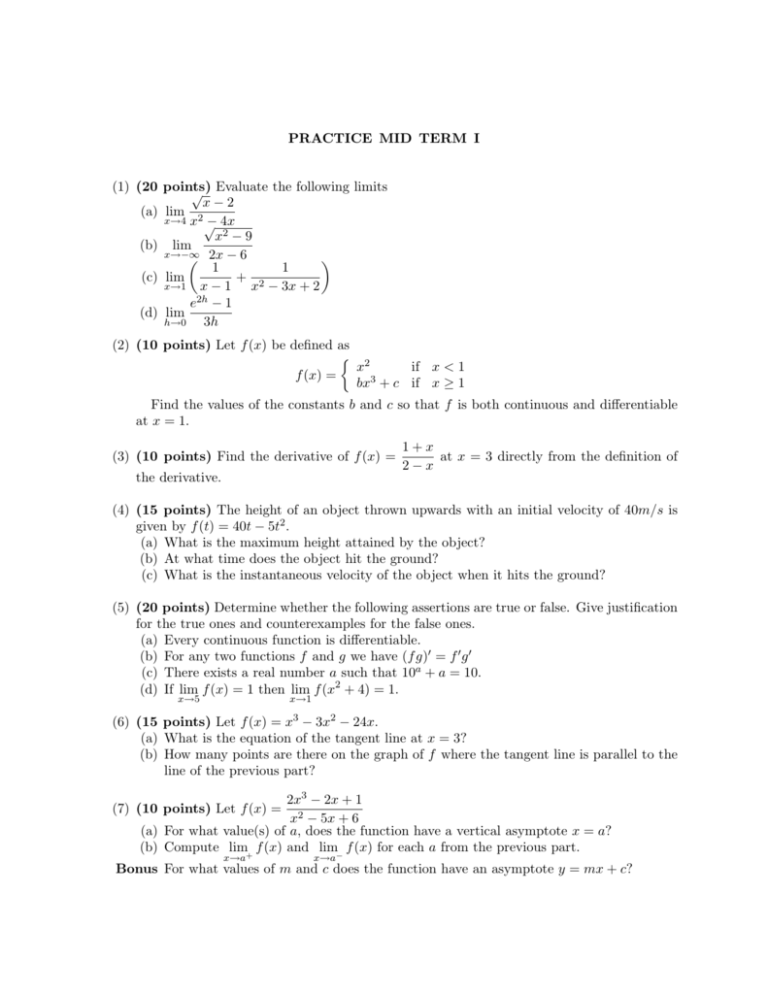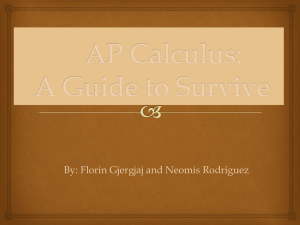PRACTICE MID TERM I (1) (20 points) Evaluate the following limits
advertisement

PRACTICE MID TERM I (1) (20 points) √ Evaluate the following limits x−2 (a) lim 2 x→4 x √ − 4x x2 − 9 (b) lim x→−∞ 2x − 6 1 1 (c) lim + 2 x→1 x − 1 x − 3x + 2 2h e −1 (d) lim h→0 3h (2) (10 points) Let f (x) be defined as 2 x if x < 1 f (x) = 3 bx + c if x ≥ 1 Find the values of the constants b and c so that f is both continuous and differentiable at x = 1. (3) (10 points) Find the derivative of f (x) = the derivative. 1+x at x = 3 directly from the definition of 2−x (4) (15 points) The height of an object thrown upwards with an initial velocity of 40m/s is given by f (t) = 40t − 5t2 . (a) What is the maximum height attained by the object? (b) At what time does the object hit the ground? (c) What is the instantaneous velocity of the object when it hits the ground? (5) (20 points) Determine whether the following assertions are true or false. Give justification for the true ones and counterexamples for the false ones. (a) Every continuous function is differentiable. (b) For any two functions f and g we have (f g)0 = f 0 g 0 (c) There exists a real number a such that 10a + a = 10. (d) If lim f (x) = 1 then lim f (x2 + 4) = 1. x→5 x→1 (6) (15 points) Let f (x) = x3 − 3x2 − 24x. (a) What is the equation of the tangent line at x = 3? (b) How many points are there on the graph of f where the tangent line is parallel to the line of the previous part? 2x3 − 2x + 1 x2 − 5x + 6 (a) For what value(s) of a, does the function have a vertical asymptote x = a? (b) Compute lim f (x) and lim f (x) for each a from the previous part. (7) (10 points) Let f (x) = x→a+ x→a− Bonus For what values of m and c does the function have an asymptote y = mx + c?











